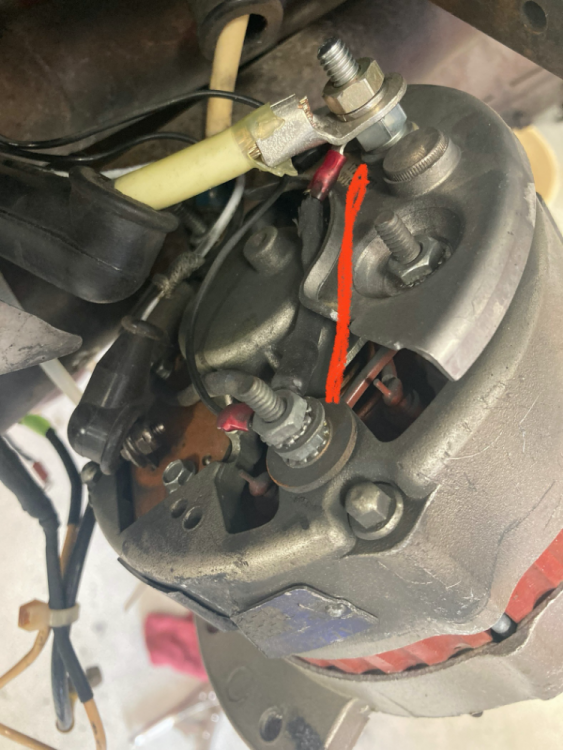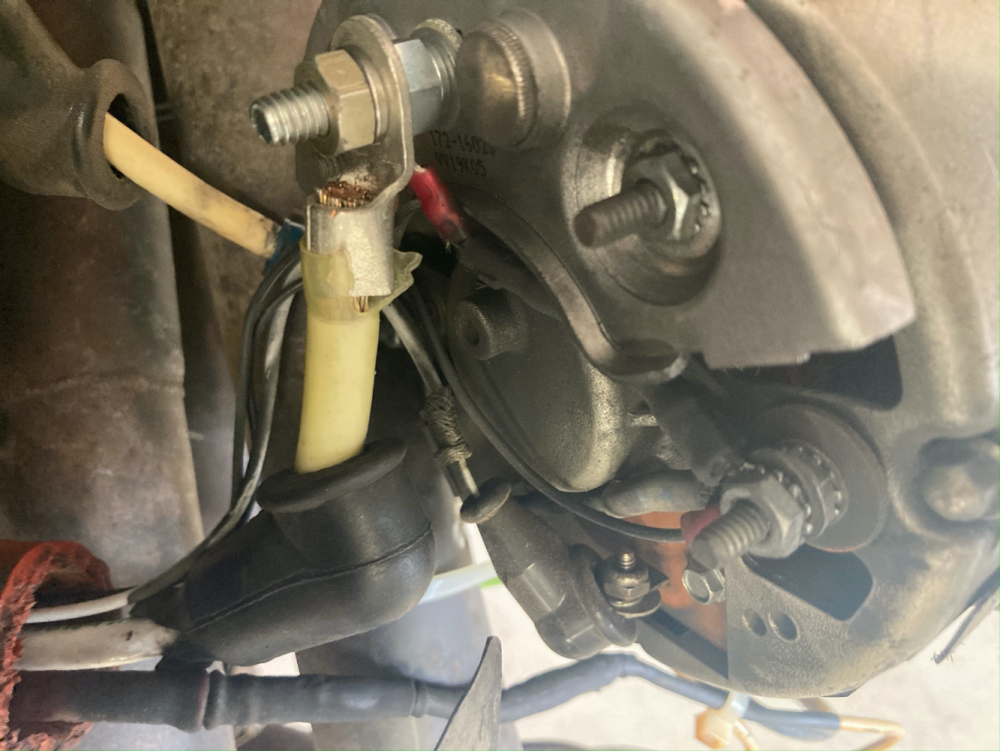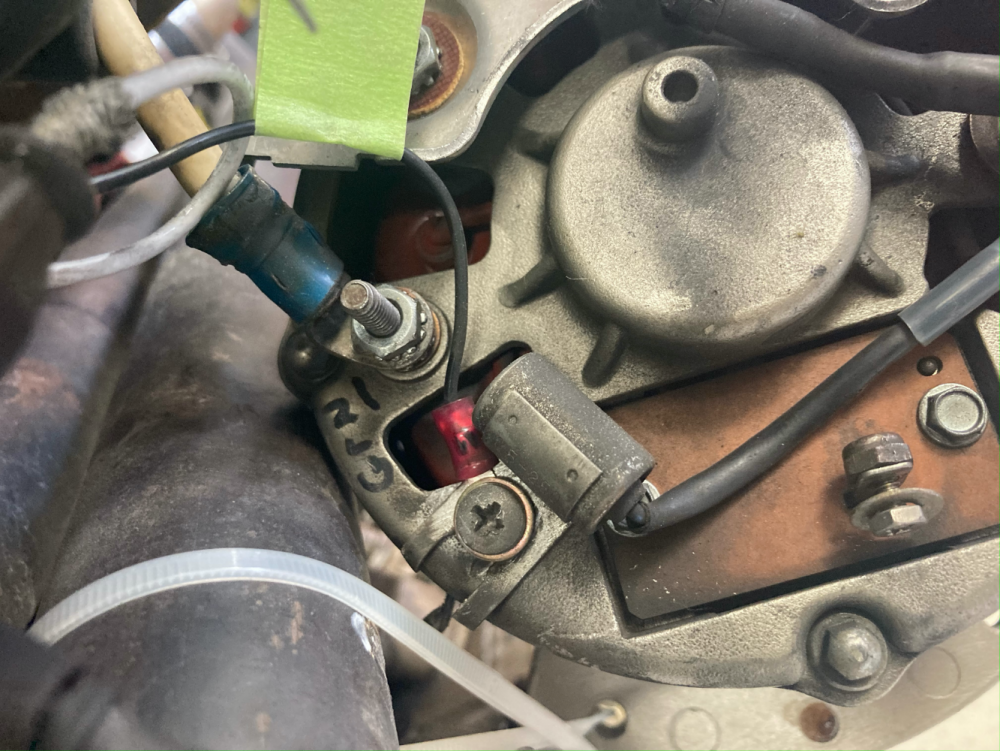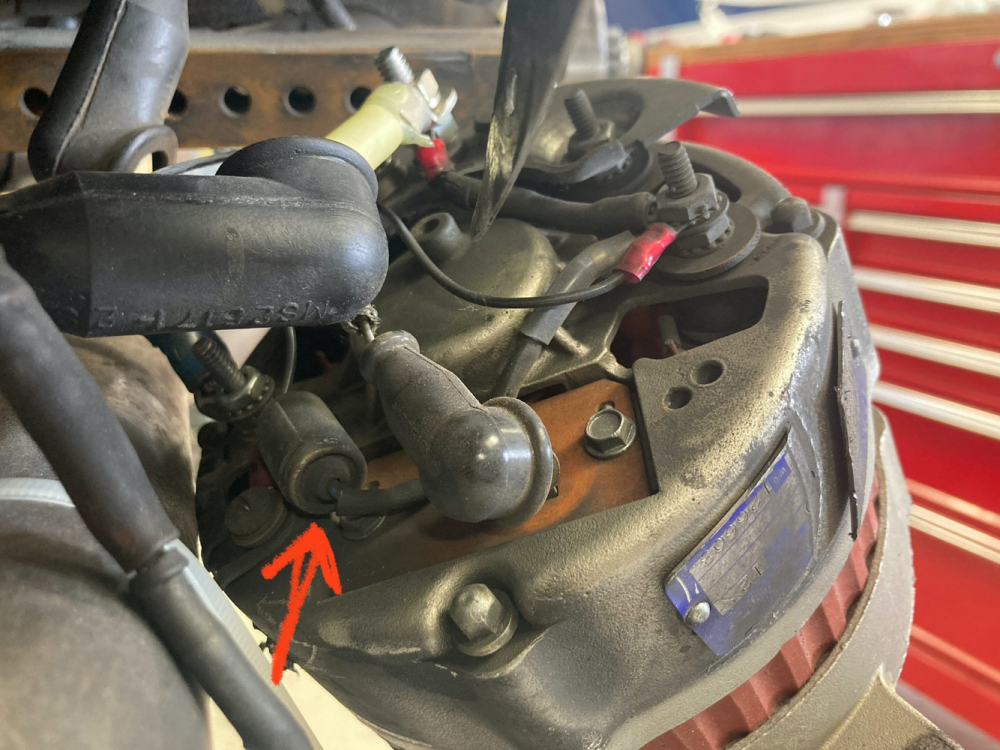
bencpeters
Verified Member-
Posts
15 -
Joined
-
Last visited
Profile Information
-
Gender
Male
-
Location
Leavenworth, WA
-
Interests
Skiing, Rock Climbing, Paragliding, Running, Mountain Biking
-
Reg #
N7778B
-
Model
1964 M20C
-
Base
8S2
Recent Profile Visitors
The recent visitors block is disabled and is not being shown to other users.
bencpeters's Achievements
-
I've got a rayjay C and as long as you're aware of the limits of the system, it's great. I actually really love the ability to fly "low and slow" and have the exact same performance & fuel burn #s as the NA version, but then just push the magic lever to close the waste gate to go high. In the mid-upper teens I can get into the 160 knots range on my C with 9-10 GPH. I've seen over 250 kts GS at FL190 with a great tailwind (2.5 hours from Washington state to SLC), and I've flown in the sun at 17,000 feet over clouds full of ice in the winter. It really extends the usefulness of the plane in my opinion when you're dealing with western mountains (I fly in the Rockies and up and down the Pacific Crest very frequently). However, there are some important caveats: - Per the STC SOP you engage the turbo during the climb, after being airborne (and never below 3500'). So it doesn't help with high DA takeoff performance (in theory, you could, but you need to be careful of overboosting and CHTs, so it'd likely involve fiddling with the wastegate on the runway... not great), just climb. - My M20C runs pretty hot under boost. It's rare for me to be under 400F CHTs under cruise with the turbo engaged, and even keeping it under 410 requires a richer mixture than I'd otherwise like to run. I've heard the IO-360 Mooneys generally run cooler across the board, but it's definitely something that needs watching. - The Rayjay kit stuffs a lot of extra hardware into an already-tight engine compartment. Any maintenance you need on those components is going to be more difficult, and most mechanics I've talked to don't really like working on it. Even Mooney specialists I've talked to about it (Maxwell, Advanced Aircraft Services in Portland) don't seem to know the STC very well. There's an AD (81-19-04) to replace all engine hoses every 5 years. Ray Jay sells a replacement hose kit that avoids this going forward, but it's very unlikely that your place has this installed: https://rajay.aero/collections/ad-81-19-04-hose-replacements/products/m20e-m20f-hose-kit. So depending on where you are in the AD cycle, that's another large ticket maintenance expense coming up soon. Basically, the turbonormalizer is absolutely awesome until you have the plane in for maintenance. I think I'd have a hard time going back to a N/A Mooney (except maybe the IO-540 ones that still can climb into the mid teens and have decent performance) after having the turbo, but if I had to do it over again, I might more strongly consider stretching the finances to get into a K...
-
What kind of clouds do you refuse to enter? Poll
bencpeters replied to 201er's topic in General Mooney Talk
I hadn't seen that site before, looks like a great resource, thanks for sharing! -
bencpeters started following Inter Av Voltage Regulator Issues/Replacement , SOLD: 1988 Mooney M20J , K vs. C Model Short Field performance and 1 other
-
Any interior cabin shots?
-
K vs. C Model Short Field performance
bencpeters replied to bencpeters's topic in Modern Mooney Discussion
Great info everyone, thanks for the replies! There are enough comments here about worse takeoff/climb performance that it seems like it's probably not the right option. I'm conditionally comfortable operating there with my current C, but it feels demanding enough that I'm not really interested in making a change that would decrease margins over what I'm doing now. Yep, 8S2. Definitely not very forgiving. Fortunately, EAT is close by, so if I need some combination of high DA, heavy payload/lots of fuel I end up bumping over there (I flew to KSUN once with 4 people, and just met passengers over at EAT). I'm pretty diligent about going around if anything's not feeling good on short final down to the flare - really want to be wheels down and braking in the first 1/3 on the runway. Most of the other aircraft there are a mix of Cessnas (170, 172, 182s), which I think are all a bit more forgiving. I've seen a J there once too, and I heard there used to be a J based on field in the past. I have a friend who said he's flown a C210 in there from time to time too. Winds generally follow whatever's happening in Wenatchee but quite a bit weaker - the airport's a lot more sheltered. Usually that means fairly well aligned with the runway (east/west), but I've definitely sometimes had some interesting cross-winds to contend with. The biggest wind-related concern is usually when you've got strong westerlies - that blows over the higher terrain on the west end of the valley and can cause some funky rotor/turbulence on the west edge of the valley at pattern altitude - need to make sure you're ready for some big airspeed variations and potential sink if you take off on Runway 25 (upslope) due to winds when turning crosswind if departing to the east. I haven't, but it's on the list for sure! I'd love to fly in there some day and go climb Goode from there instead of Rainy Pass. I've seen one video online somewhere of a Mooney landing there, but I can't imagine it's common... If you're part of the FAT PNW (Flights above the PNW) faceboook group, I've seen a number of conditions reports for Stehekin posted there. My impression from these is that it gets better over the course of each season - it can start out a bit rutted/rocks but people do some work as it dries out to improve things. I'd guess it's a bit rougher than usual this year due to the Pioneer fire cutting off access for a lot of the summer, but I don't know for sure. -
As the topic implies - I'm interested in hearing experiences from people who upgraded from a C to a K and have a decent amount of experience operating on short (< 2500') fields with both. I currently have a '64 C model based at a paved 1800' runway (850' elevation, reasonably significantly upsloping in one direction, +100' displaced threshold on one end, no obstacles directly in approach paths, but some noticeable 50' trees offset from the extended center lines), and I've been wondering whether a K model would work for the same mission. With the C I treat every landing and takeoff as a short field, and have some personal minimums around density altitude and loading, but it generally feels safe, albeit without as much margin as I'd have on a longer runway. Without having ever flown a K model, my impression is that it would be more power and better climb, so perhaps better taking off, but heavier (and more slippery), so more challenging on the landing side? But I'd love to hear from people who actually have flown both and can make the direct comparison! Thanks!
-
I wouldn't use it prophylactically in clear air at those temps, but there actually were a number of clouds (e.g. visible moisture) in the area - tops were in the 12-14k range from a major winter storm below - that's what got me playing with the carb heat. I don't want to minimize the seriousness of ice formation anywhere in a non-equipped plane, but the idea of unmeltable carb ice from punching through a cold cloud with inadequate carb heat seems especially concerning. Thanks for the ideas on the heat box flapper, I'll check it out! Is there anything on the carb heat system to check out specifically?
-
I recently installed a JPI 900 on my 64C. As part of this, I now have a carb temp gauge! I've read about using just enough carb heat to keep the temp out of the yellow arc (which on my gauge is somewhere in the ~10-40F range). However, I was out flying yesterday in pretty cold air (OAT ~-15C @ 12.5k) and even with full carb heat, I couldn't get the carb temp to climb above ~32-33F in cruise (from a no-heat temp in high single digits F). This was a bit concerning to me - I'm somewhat skeptical it would be very effective at melting ice at those temperatures. Has anyone else seen this? What kind of temperatures do others see when carb heat is added? CHTs were ~340-360F and EGTs mid 1400s at the time. Not sure if it's related, but the cabin heat performance is also very underwhelming. I know can be an issue in vintage Mooneys, but when I put my hand in front of the vent with the heat on full, the air is barely warm - certainly warmer than ambient, but it almost feels cool on the skin. I'm no expert on the airflow patterns we've got in these planes, but I was wondering if these are related and/or might be indications the "doghouse" needs to be rebuilt, or something else with the intake/exhaust manifolds being off? Thanks!
-
Inter Av Voltage Regulator Issues/Replacement
bencpeters replied to bencpeters's topic in Vintage Mooneys (pre-J models)
Thanks for all the thoughts! I went flying again yesterday evening and took a multimeter with me to do a little debugging. - @65MooneyPilot's suggestion to cycle the master, I tried that, but no luck unfortunately. - I was looking at the troubleshooting guide in http://www.beechcraft.org/vtail/interav.pdf - it suggests measuring voltage to ground on the terminals with master on, engine off. I did that on the voltage regulator only (since it's pretty easy to get leads on through the oil inspection port), and found ~100mv on both (not the same value, but close) terminals - so close to ground. According to that sheet, that means an "open Reg or bad connection" (but not a bad resistor - according to the troubleshooting sheet, a bad resistor connection would lead to values of ~0.4 V on both terminals). Kinda leaning toward replacing the voltage regulator with the plane power one regardless - I trust solid state electronics a lot more and it's not very expensive. But it does make me wonder whether there's bad wiring to the alternator or perhaps a bad connection on it? -
Inter Av Voltage Regulator Issues/Replacement
bencpeters replied to bencpeters's topic in Vintage Mooneys (pre-J models)
Interesting re: the resistor! Do you know what it looks like? These are some photos of the alternator, but I don't see anything that obviously looks like a resistor to me... unless it's under the shrink wrap on the connection between the two terminals near the red line here: Or is the resistor over on the other side by the voltage regulator? I'm not totally sure where I should be looking, but none of the wires look obviously problematic here... Thanks! Other pics: -
Hi all, I have a M20C with an alternator conversion. I recently overhauled the engine and installed a JPI 900 with better voltage monitoring. Since then, I've noticed that I don't get charging from the alternator after starting the engine until I run up the engine past a certain point, usually somewhere in the 2000+ RPM range. Before this, I'm seeing battery voltages below 12V with a 6-7 A draw, but after I run up the engine and hit the threshold, I immediately get ~14V, with an initial +20A current that eventually settles (presumably as the battery recharges). Voltages remain constant regardless of load or engine speed for the rest of flight. Talking with my mechanic, it sounds like it's probably a case of a bad voltage regular. I have an Inter Av unit that I believe was installed with the original generator to alternator conversion (prior to my ownership). It's the same unit as before the overhaul, and I used to see power coming from the alternator on the amp meter immediately after engine start, but the JPI is installed in the "Ammeter Configuration" which measures current at a different place than the old gauge, so I can't say for sure that this issue wasn't happening before. Either way, it seems like the voltage regulator is probably ripe for replacement. I was looking at options, and it seems like the consensus choices are Power Plane or Zeftronics. I found this thread comparing options: I'm a bit confused on the Zeftronic part numbers though - looking at models on Aircraft Spruce (https://www.aircraftspruce.com/catalog/eppages/zeftronicsreg.php?clickkey=35105), it looks like the Mooney listed models have some kind of plastic barrel connectors which I'm guessing are the original wiring harness from the OEM part, which was replaced on my plane when the Inter Av was installed and the alternator conversion happened. My Inter Av just has 4 exposed wiring terminals (similar to the Zeftronics R15V0N). Which Zeftronic P/N would be appropriate to install? Do I need to get one of the Mooney ones (R15300 or R1530B), and then find/fabricate the plastic wiring harness? Or is there some other way to install it that I'm missing? It seems like others have installed these successfully on vintage Mooneys, does everyone else just still have the original harness? Thanks!
-
Hi everyone! I'm researching GPSS setups with an existing STEC-30. My research so far has led to either a G5/GI-275 HSI with autopilot interface or a ST-901 being required to provide GPSS info from the navigator to the STEC. However, I was looking at the GTN650xi spec page and noticed that it lists "autopilot compatibility" as a feature, and the Aircraft Spruce page (https://www.aircraftspruce.com/catalog/avpages/ngar650.php) shows STEC-30 in the list of compatible autopilots. Does this mean that the 650xi could drive a STEC-30 directly from the GPS or is a G5/GI-275 still needed in the middle? If so, is this a "new" feature for the GTN-650xi vs the old 650? Other than that it seems like the main differences are a faster processor and nicer screen, not much else different? Thanks!
-
SOLD - 1967 M20F - ModWorks Trophy 221 - $59,500
bencpeters replied to SantosDumont's topic in Aircraft Classifieds
Interesting plane! What's the "conventional wisdom" on the Continental 6 cylinder IO-360 vs. the standard Lycoming 4? Maintenance, TBO, fuel burn, etc? I've tried a couple of google searches, but most quickly end up in holy wars ;-) -
Thanks! Definitely let me know who you are using, I'd be curious. I gave LASAR a call too, we'll see what their availability looks like, but it'd definitely be easier to get it done somewhere closer, especially if it ends up taking more time than a single day.
-
Hi, new member here! I'm looking at an M20C in the Reno area, and I was wondering if anyone had any recommendations for a good mechanic in the greater area to go to for a PPI? Thanks! Hopefully joining the ranks of Mooney owners at some point in the near future...







